Varieties and placement of fireplaces in a private house
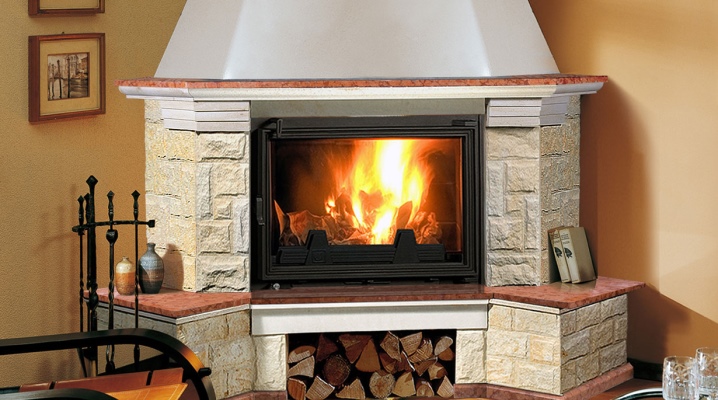
Fireplace (caminus) is translated from Latin as "open hearth". In the old days, they heated their homes, cooked meat on a spit. Modern fireplaces are varied and safer, but not all of them have live fires. Cozy hearths with a real flame are allowed to be built only in private houses. What kind of fireplaces are, where they are located and whether they are built independently, we will tell in our article.
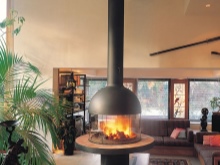

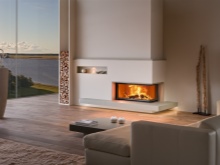
Peculiarities
Fireplaces in Russia appeared at the behest of Peter I. Returning from a trip to Europe, he ordered the nobles to build European hearths in their homes by a royal decree. The fireplaces were built, but because of the harsh climate, the stoves were not abandoned. Elizabeth, at the time of the construction of the Tsarskoye Selo and Peterhof palaces, ordered to equip them with Russian stoves. And only Catherine II brought back the fashion for beautifully equipped hearths in the houses of the Russian nobility.
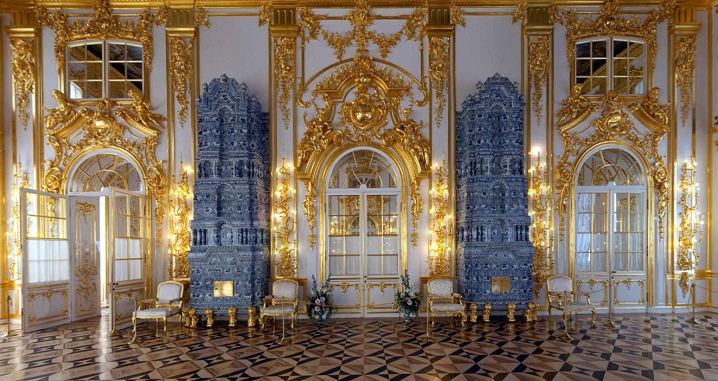
Today, fireplaces are heated not only with wood, but also with gas, biofuel, wood pellets, and fuel briquettes. In a classic hearth, cubic meters of firewood are burned, so fireplaces are not used as the main source of heat. Modern private houses have other heating methods - a steam boiler, a Dutch oven or a central heating system. But as auxiliary heating and a beautiful design solution, they are still popular.
Traditional wood-fired appliances are not easy to install. Errors in the installation of the chimney can end with the fact that the smoke will not go outside, but inside the room. In order not to endanger yourself and your family, it is better to entrust the matter to a professional.
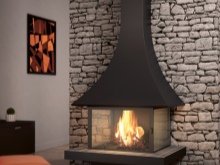

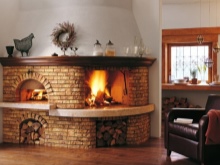
When the hearth is installed, it must be allowed time to dry completely before starting to use. Prepare a place to store firewood next to the fireplace. In the process of using, you must not forget to clean the furnace from combustion products and observe fire safety measures, which consist in the following steps.
- It is necessary to check the combustion hole and monitor the health of the chimney. If they are not cleaned in time, the accumulated soot will reduce the traction properties of the structure and smoke will enter the room, creating a danger of carbon monoxide poisoning.
- You need to learn how to properly light the fireplace, starting with a small amount of fuel. Firewood can be added only when the fire is actively "played out". If you put them all out at once, they will quickly burn out, and the heat will go into the pipe.
- There is one more reason not to tamp the firebox with a lot of firewood, such an overload can ruin the walls of the fireplace and even lead to a fire.
- When using the hearth, remember to open the shutter.
- Do not add flammable liquids to the flame, throw garbage or painted wood, the toxic substances contained in them can cause poisoning of the people in the room.
- The fireplace itself and the floor around it must be made of fire-resistant materials.
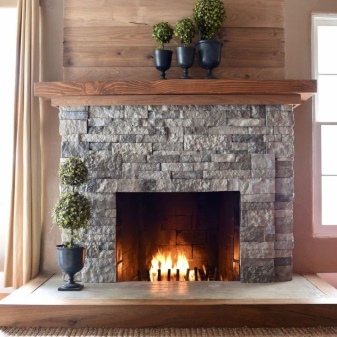
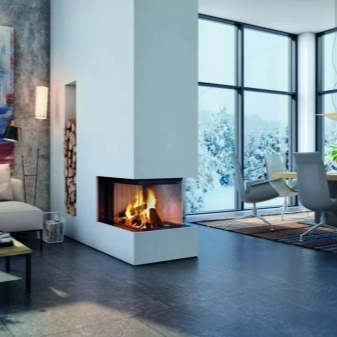
A home with live fire has its pros and cons, which should be considered if you decide to equip it. The advantages include the following points:
- beautiful design, enriches and ennobles the interior;
- emphasizes status;
- a cozy romantic atmosphere is created in the living room;
- additional heating appears;
- the problem with dampness is being solved.


Judging by the positive qualities, fireplaces "turn on" for the soul, a pleasant mood and only a little for a functional return. Serious negative points make you wonder if beauty and romance are so important. Judge for yourself:
- live fire is always dangerous, children and animals should be watched;
- at the first ignition, the room becomes smoky;
- the fireplace will have to be looked after, cleaned, to monitor its serviceability;
- soot, soot, firewood do not contribute to perfect cleanliness in the living room;
- The efficiency of the fireplace is low, you can't heat the whole house with it;
- combustion is associated with drafts;
- the arrangement and maintenance of a home is not cheap.
If you are not afraid of problems, you can get a cozy and beautiful room with a lively bewitching fire.
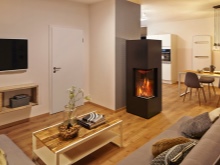
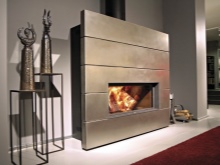
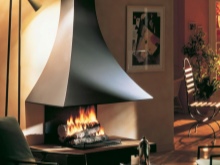
Species overview
Fireplaces, as devices for decorating and heating houses, are quite diverse. It will not work to classify them in one list. The types should be considered separately by location, by the type of fuel used, and the base material from which they are made should be taken into account. Devices differ in appearance and functional features.
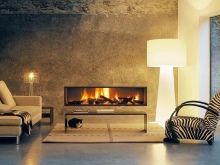
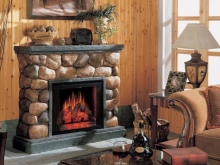
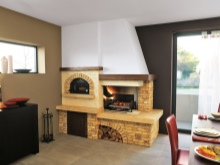
Fireplaces are not always considered as a decorative addition to the interior, they can be quite functional. According to their practical properties, the foci are divided into the following types.
- A boiler-fireplace (thermo-fireplace) or a device with a water circuit contains a solid fuel boiler. Outwardly, it looks like an ordinary fireplace in a metal base, but in fact it is intended to heat the house.
- The BBQ fireplace is a large combined structure with several portals that requires a reinforced foundation. They are installed in summer cottages, summer buildings and private houses with large kitchens. The design may contain a brazier fireplace and a grill.
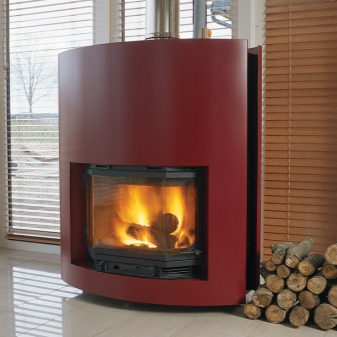

Home hearths also differ in the type of fuel that is used for heating. The accumulation of soot, the duration of combustion, the height of the flame, the heat output, the aesthetic component and the cost of the fuel itself depend on its choice. The types of fireplaces for the use of fuel are as follows.

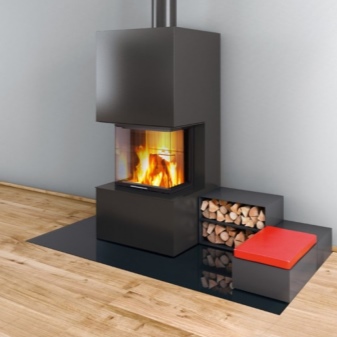
Wood burning
Cast iron or brick wood-burning fireplaces are traditional devices, they need good insulation of all seams and surfaces. In them, with the help of firewood, a live fire is kindled and maintained. But from the classic logs today can be abandoned in favor of convenient eurodrops. They are wood fuel compressed into pellets or briquettes, the heat transfer of which is 40-50% higher than that of ordinary logs. A ten percent humidity index influences obtaining a high-quality uniform flame without the presence of sparks. A full filling of wood pellets is enough for two hours of burning, peat briquettes work twice as long.
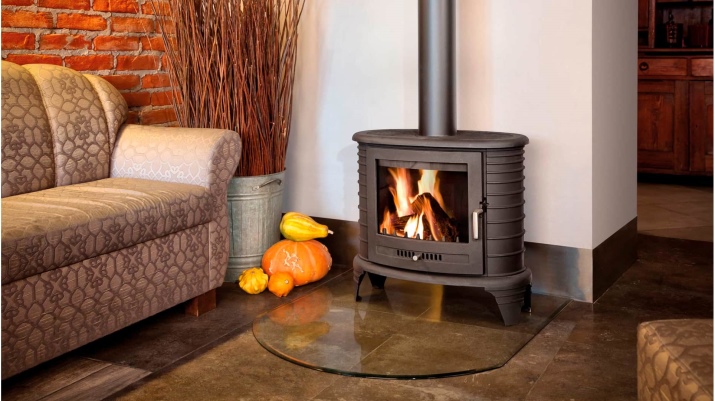
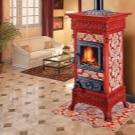
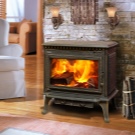
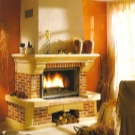
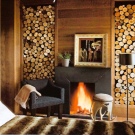
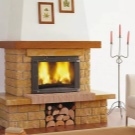
However, for lovers of everything real, natural, nothing can replace the usual fragrant firewood with its sparkling heat and crackling. Fire boxes are installed right there by the fireplace. Only well-dried material is used for heating. It is desirable that the length of the logs is three quarters of the depth of the furnace portal. For long-term burning, the thickness of the wood should be from 7 to 10 centimeters. The first bookmark is made in a horizontal position, no more than 30 cm high, the logs are laid out at intervals of one centimeter.
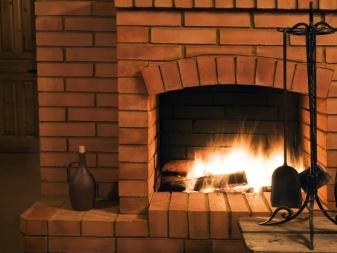
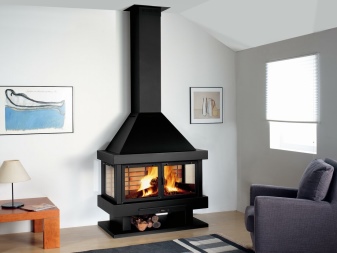
Electrical
Electric fireplaces are affordable, practical and economical and can be installed in any room of a house or apartment without strengthening the foundation. Unlike the classic options, they are safer for keeping in a wooden or log house. The advantage of such models is as follows.
- They have an attractive appearance.
- During installation, you can do without the help of a specialist.
- Innovative technologies help to achieve realistic fire.
- The regulation system allows you to maintain the desired temperature.
- The device does not produce ash and soot, which means that it does not need to clean the chimney and does not collect dirt around it.
- The cost and maintenance of such products is much cheaper than wood products.
Anyone for whom it is not fundamental to have a live fire in the hearth will only benefit from an imitation of a traditional fireplace.
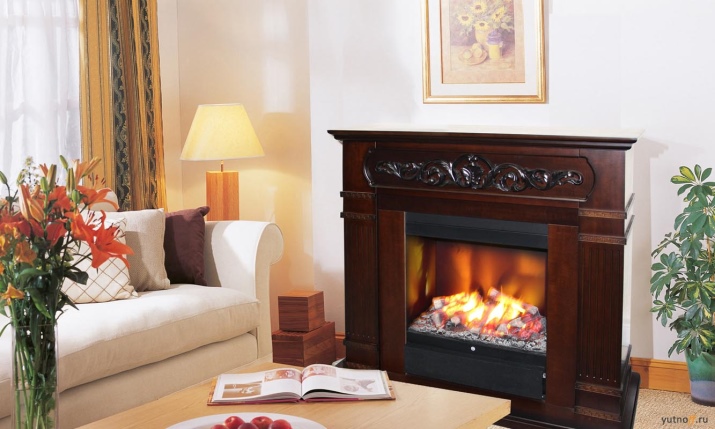
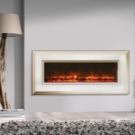


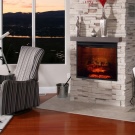
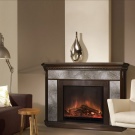
Bio fireplaces
A modern home with real fire, suitable for apartments and private houses. He does not need a chimney and an exhaust hood, the device runs on environmentally friendly biofuel - a special liquid fuel based on ethanol. The flame does not form soot, ash and smoke. If you use sea salt fuel, you can hear the characteristic crackling sound that is usually generated by burning wood.
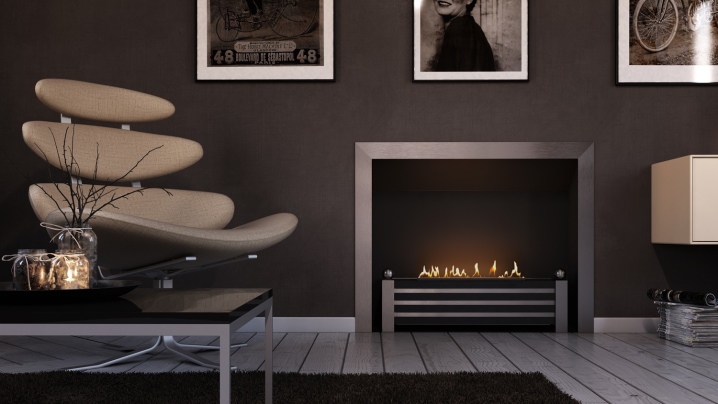
Bio fireplaces serve as a decorative element of the interior, they are not expected to be particularly practical, although the heat transfer of this type of fuel is much higher than that of wood. The advantages include the presence of a beautiful even flame, a large selection of models, the absence of dirt, smoke and burning. The disadvantage is the high cost of fuel, as well as the need to observe fire safety, since the device contains a real fire.
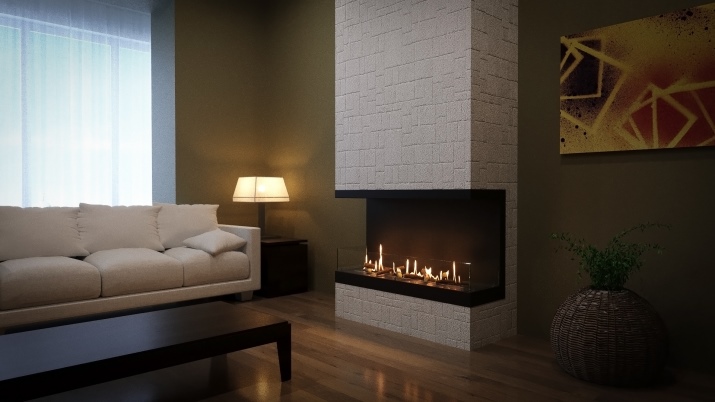
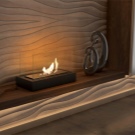
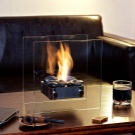
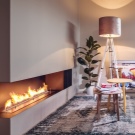
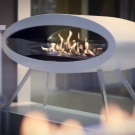

Gas
Gas fireplaces can have a full-fledged firebox, but do not need a chimney. Their heat transfer is much higher than that of classic wood-burning options. A special permit is required for the installation of a gas hearth, and only specialists can carry it out. Fireplaces run on bottled propane, which is placed in a separate room with good ventilation.
In a room with a decorative hearth, there should be sensors to control the concentration of gas in the air, in case of a leak, the propane supply is automatically stopped.
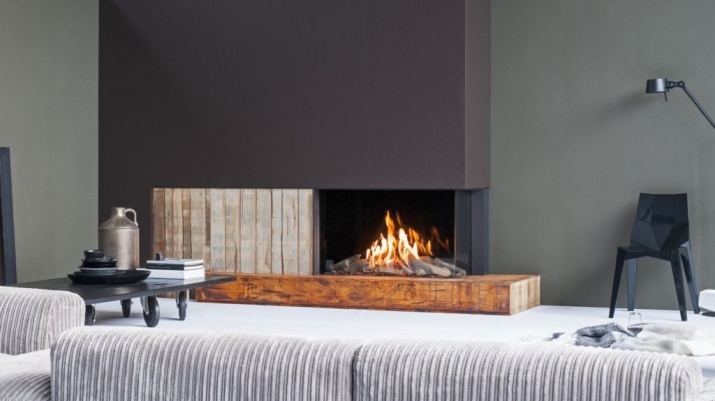
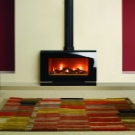
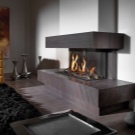
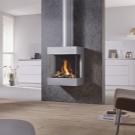


Various models of fireplaces make it possible to radiate heat in one, two or three directions, it all depends on the design of the firebox. How many open sides the hearth has, so many directions receive heat to move into space.
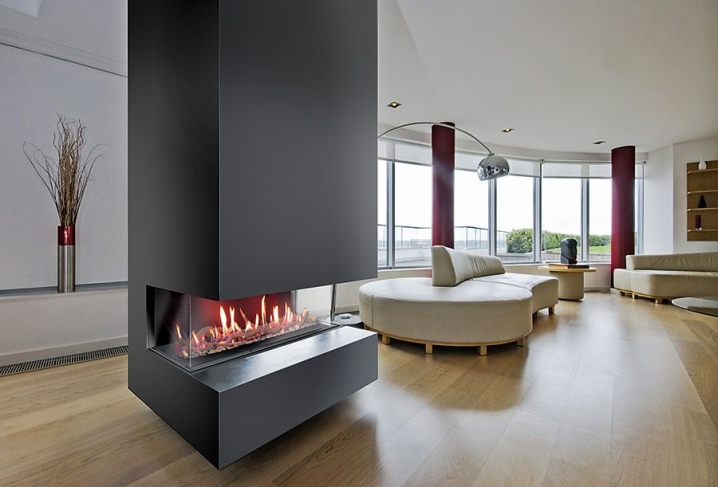
Unilateral
The usual classic shape of the hearth, where heat energy enters through a single firebox window. Good heat dissipation is due to its inclined walls.
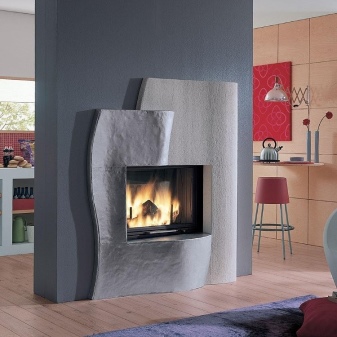
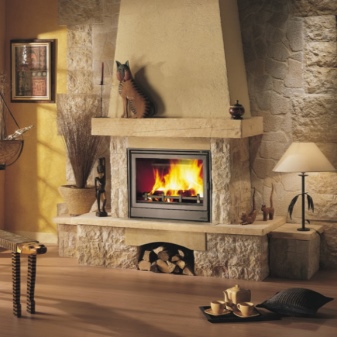
Bilateral
Corner models, island models with see-through vision and some wall-mounted options can provide a two-way heat outlet. Such fireplaces look more spectacular than traditional ones, but they require the arrangement of chimneys with a stronger draft.
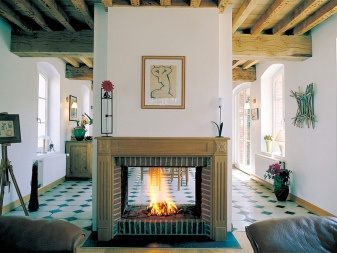

Trilateral
The fireplace looks very impressive and modern; it has three visible surfaces through which the fire is visible. The chimney cabinet sits directly above the flame aquarium and forms a single structure with the fireplace and its base. Unfortunately, the efficiency of double-sided and three-sided models is lower than that of traditional fireplaces.
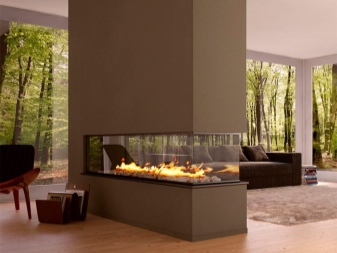

Design options
Fireplaces, as an interior solution, are quite versatile. They are suitable not only for historical or rural trends, the modern interpretation of hearths allows them to be introduced into an environment of urban, techno and eco-styles. In fact, there is a fireplace image for any interior.
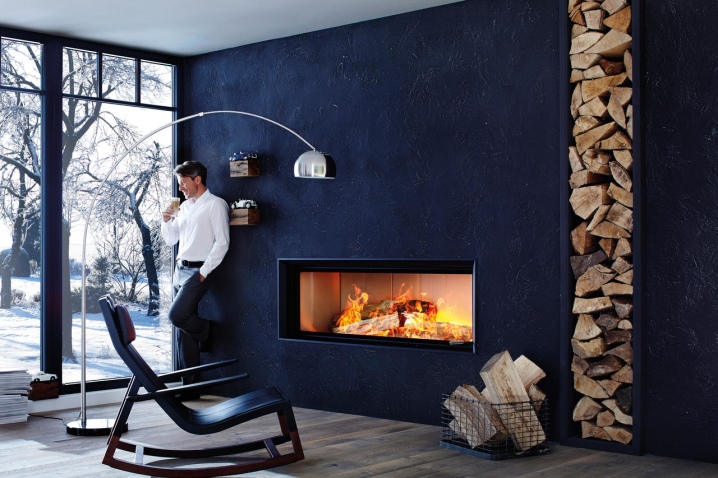
Classical
Fireplaces for rooms in a classic style have perfect geometric shapes. Most often, the facade is made of light natural or artificial stone. Classicism is a style of strict luxury, its characteristic elements are columns, moderate stucco molding, all this is reflected in the design of classical portals.
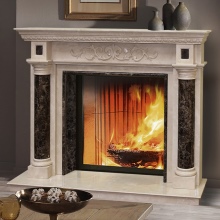
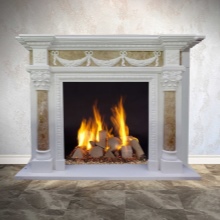
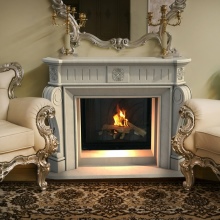
Country
Each nation has developed its own interiors with a rustic flavor, and the fireplace is not always represented in them by a massive red brick structure. Let's take a closer look.
- Provence. For the style of the French village, the facades of the hearths are decorated with tiles, laid out in stone, or apply a simple design using white stone.
- American country. Facing stone is used in the decoration of fireplaces for this type of interiors. Sometimes the portals are decorated with a simple plaster facade with natural wood elements.
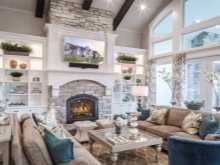
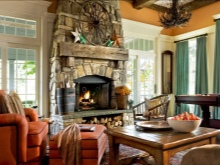
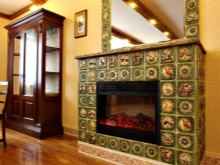
Hi-tech, minimalism
Fireplaces for high-tech interiors, minimalism and other urban areas have clear graphic lines, use modern materials, and look simple but stylish.
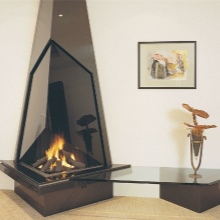

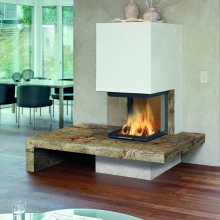
Loft
Brick, stone or metal are the best materials for an industrial style fireplace.
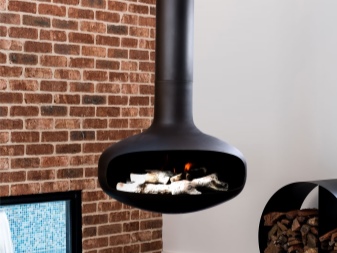
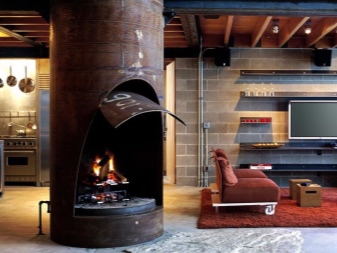
Imperial
Luxurious Empire style fireplaces are used to decorate columns, antique sculptures, gilding.
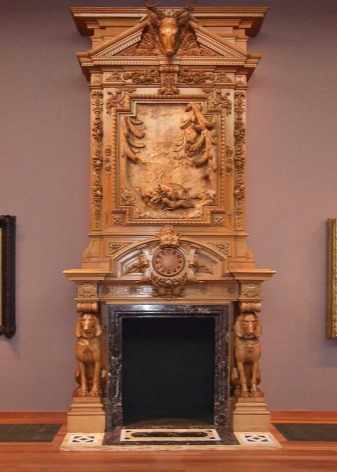

Nuances of choice
When choosing a fireplace, there are a number of criteria to consider.
- Building type. In a frame or house made of SIP panels, a powerful classic fireplace made of stone or brick will look too massive. You can purchase a factory fireplace with heating functions. It must be installed in a frame building at a certain distance from the wall. All types of fireplaces are suitable for a house from a bar. They are erected at the load-bearing wall, retreating from it a short distance. For a house on screw piles under the fireplace, you will have to add four more piles 108 in diameter. In a brick building, if the area allows, any fireplace can be introduced.
- The choice of a home is influenced by the tasks assigned to it: to heat the room, you will need a fireplace with a water circuit, an electric or biofireplace looks good in decorative design, a brazier fireplace is chosen for cooking with "smoke". If there is very little space and money, and you really want a hearth, you can use a false fireplace. Outwardly, it looks like an ordinary one, but you cannot light a fire in it.
- The size of the hearth directly depends on the scale of the room itself. - a large frontal structure is suitable for a large hall; for a small room, you can choose a neat corner model.
- When thinking about a fireplace, you should decide for yourself what type of fuel you would like to see in your fireplace. Electric, gas and bio fireplaces do not need constant cleaning and do not create dirt around them. But those who like to sit comfortably in an armchair by a live fire with a pleasant crackle of firewood will prefer the classic wood-burning option.


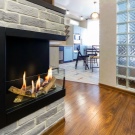
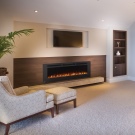
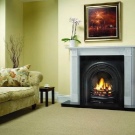
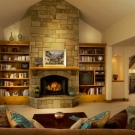
Location methods
The variety of fireplaces is determined not only by the purpose or the use of different fuel options, structures can have different locations - built into the wall, occupying a corner or hanging above the floor in the center of the room. Each interior needs its own, specific design solution, which will allow you to beautifully decorate the room.
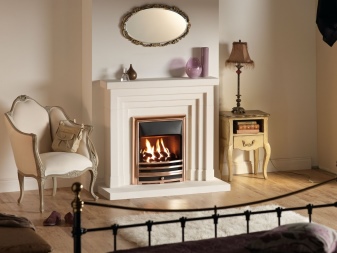
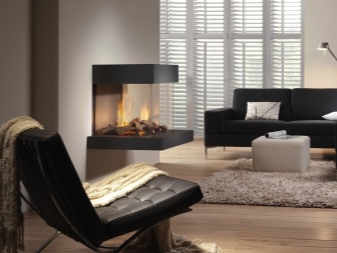
Built in
The built-in fireplace is located in the recess of the load-bearing wall. Its placement is planned at the stage of the building design, during the formation of the hearth, a powerful chimney with good traction characteristics is being built. The built-in model does not take up space in the house, but has enough potential to heat a large room.
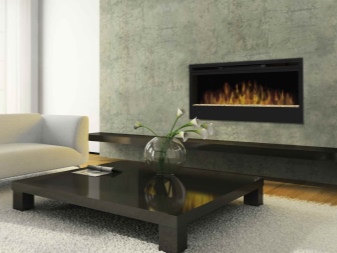
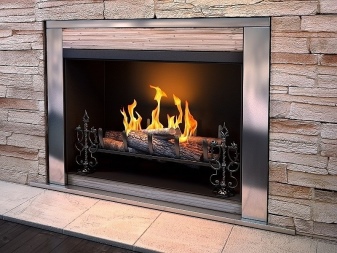
There are other options for built-in fireplaces, for the sake of which a thick island decorative wall is erected in the center of the room. Construction is an effective way to decorate living rooms. For such fireplaces, it is better to use fuel that does not need a chimney.

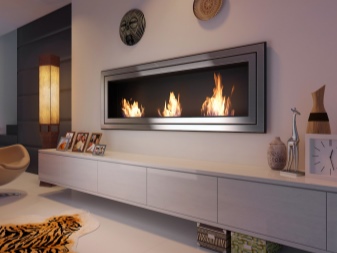
Wall-mounted
The most common type of fireplaces. It does not have spliced components with the wall, it is built apart, but the chimney is located directly on the wall. Despite the impressive size, a significant plus of such structures is that they can be installed in a ready-made, long-existing house, if the owner has such an idea.
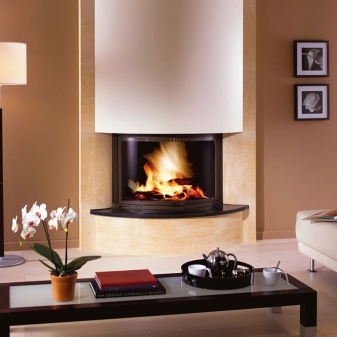
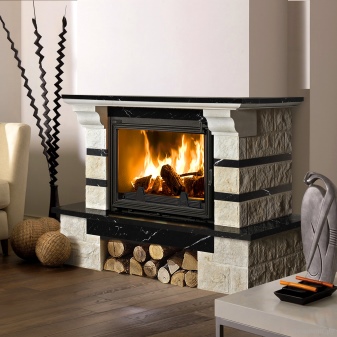
Angular
Corner fireplaces are one-sided and two-sided, it all depends on their location - inside the corner or on the outside. An internal placement option is considered classic, when the hearth rests against adjacent walls, uniting them with a furnace window. The firebox also touches both walls. The double-sided fireplace is embedded in the outer corner and makes it possible to view the hearth from both sides of the corner. This option is more unusual and effective.
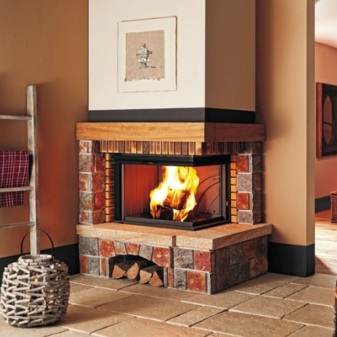

Standing separately
Island fireplaces can be placed in any part of the room.If you have to build a special wall for them, designers try to decorate it with additional decorative elements - an aquarium, shelves. There are also free-standing structures that do not need wall support. They are made from different materials and look very distinctive.
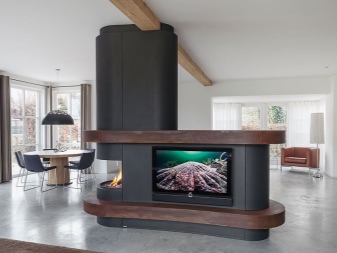
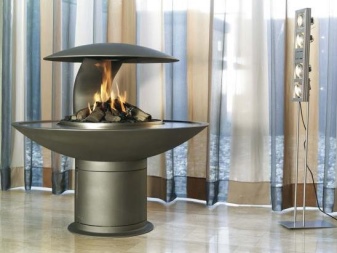
Suspension
These are the most unusual structures hanging from the ceiling and forming a single whole with the chimney. Without touching the floor, they keep the fire at a comfortable distance from the seated person. Sitting in an armchair or sofa, you can watch the dancing flame for hours.
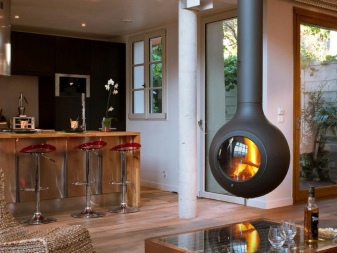
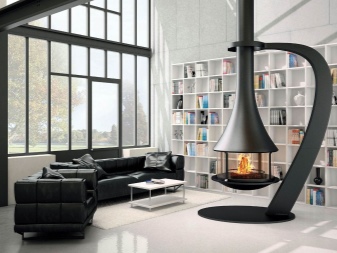
Installation rules
The installation of a real wood-burning fireplace with live fire is associated with a certain danger, so it is entrusted to specialists. An improperly designed ventilation system and chimney design can lead to carbon monoxide poisoning. Only the most confident people in their skill assemble fireplaces on their own.

The assembly steps are as follows.
- Foundation. A wood-burning fireplace is included in the project of the house, so the foundation is poured simultaneously with the foundation of the building. But at the same time they do it separately, more strengthened. To make a foundation for a fireplace in an already built house, it is necessary to remove the floor covering and part of the floor, go 50-70 cm deep into the ground, lay drainage, build formwork, introduce reinforcement and pour concrete.
- Walls. A multilayer insulating material is mounted on metal guides. Additional refractory brickwork can also serve as an insulator.
- Fireplace laying. A special heat-resistant solution must be used. Masonry starts from the foundation, using solid brick in construction. All material that comes into contact with the firebox must be fireproof. For finishing the front of the fireplace, you can choose a decorative stone.
- Chimney. The internal chimney is made up of two pipes inserted into each other. It passes through the ceiling, roof and is led out in the form of a pipe. When creating a chimney, all joints must be carefully sealed.
- Floor. The surface around the fireplace within a radius of one and a half meters is laid out of heat-resistant materials - facing tiles, artificial or natural stone.
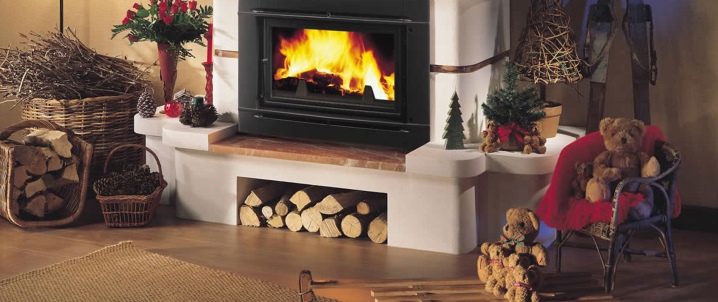
Examples in the interior
Even the simplest fireplace enriches the interior, brings to it an atmosphere of warmth and tranquility. The original hearths with live fire look mesmerizing.
- Zoned wall with fireplace.
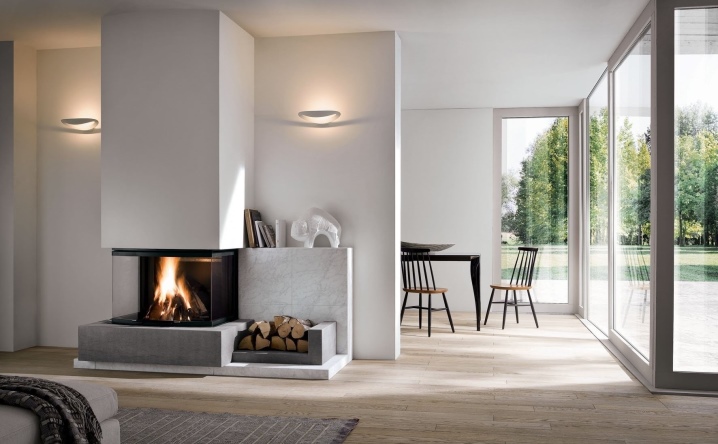
- Hearth with tiles in a cozy provence.
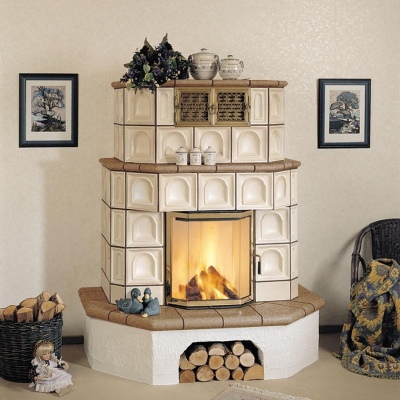
- Corner fireplace in a modern interior.
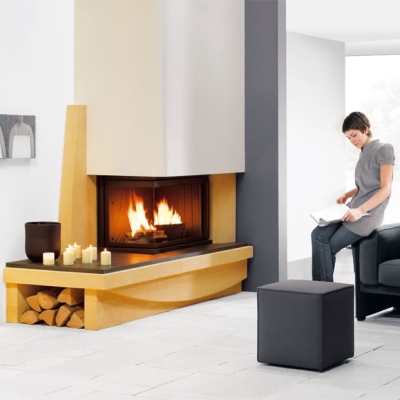
- Three-sided model.
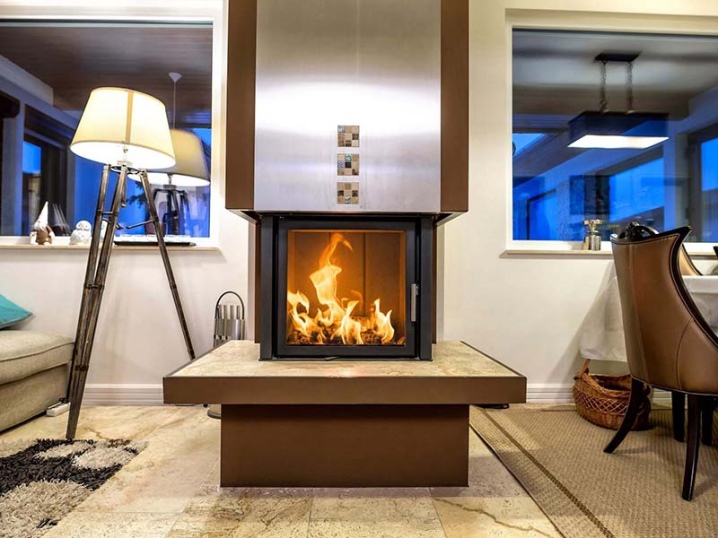
- A wide metal chimney adorns the laconic design.
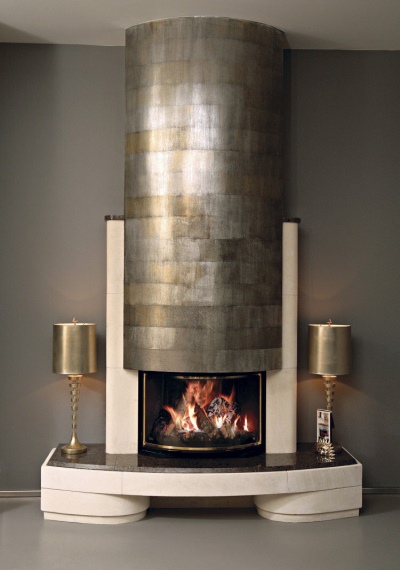
- Corner model in a country setting.
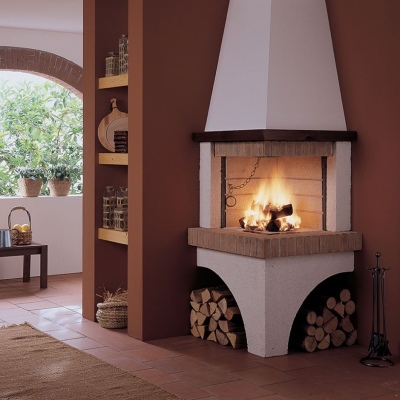
- Unusual design with broken lines.
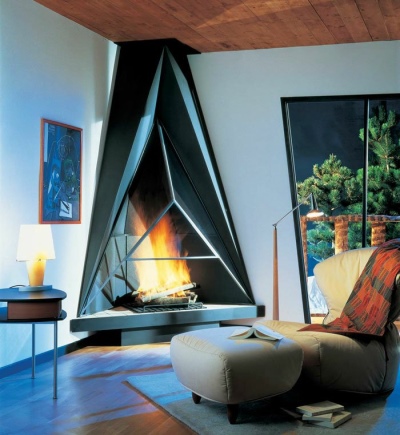
- The original design of the fireplace.
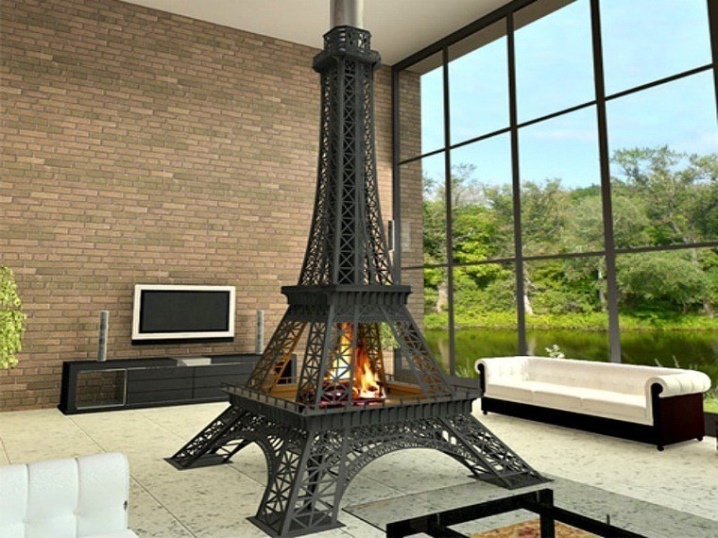
Advantages and disadvantages of fireplaces in the house in the next video.













The comment was sent successfully.